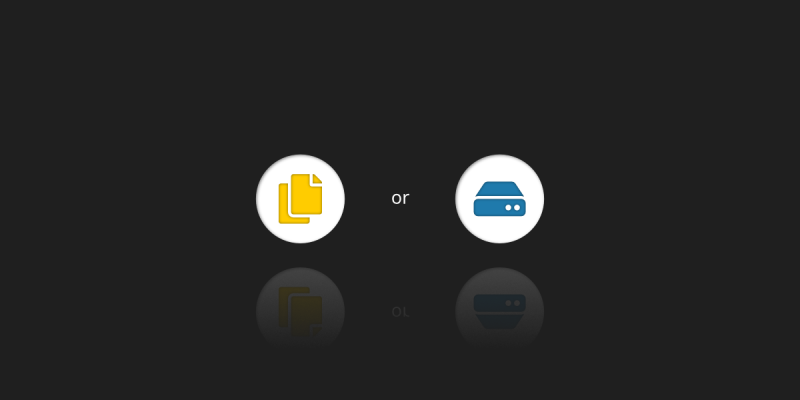
File backup or image backup – what to choose?
Here at Xopero, we divide people and companies into two groups. Those that are aware of the risks awaiting their data, and in conclusion making sure that it is secure by creating regular backups. The second group counts all people that haven’t lost their data yet. This one will shrink over time for sure. How do we know that? Because in today’s world there are countless amounts of risks threatening the security of data.
Phishing attacks, accidental or intentional deletion, system errors, malicious hacker attacks. And many many more. Researchers point out that the cost of 1-minute downtime costs organizations from $926 to even $17k. That is why having a comprehensive backup solution in place is the best thing you can do for your company. But when it comes to backup, which type to choose? File backup or Image backup? In this article, we will take a closer look at the file and image backup strengths and weaknesses. Finally, I will try to answer which of these two options best fit your business needs.
Pros and cons of a file backup
Before we go into specific details, let’s consider what file-level backup actually is.
File backup as the name suggests allows saving individual files and folders from backed-up devices and later keeping them on a different location – like a local server or cloud storage. This is probably the most popular type of backup performed nowadays – not by coincidence!
File backup allows you to selectively choose which files you want to protect, and which you don’t. The result of that process is that backup requires a lot less storage space, and overall is less expensive to maintain. It allows you to precisely restore files you want in case of corruption or something happening to them. It also enables you to set priority to the files you create, you can choose which files you need to protect, and which you don’t. The other strength of a file backup is the restoration time. You have quick access to essential copies of the protected files. You could also set a backup plan in such a way that the essential files that are updated more often, are going to be backed up every 30/20/10 minutes or even less!
But file backup has its limitations and drawbacks. Especially when it comes to accidents like system crash or hardware failure. In such cases, the file-level backup is simply not enough.
To get back to work, you would need to set up the whole system from the scratch – installing the operating system, all the software needed, and only then restoring files from a file backup. The other problem you should also consider is the growth of the IT infrastructure. With a larger number of endpoints to protect and more and more files to back up, such a process takes more time and consumes much more system resources.
Pros and cons of an image backup
Let’s now explain what image backup is.
Image-level backup is an image of your system, disc, partition, etc. This type of backup allows you to protect the whole operating system with its configuration, software installed on that system, and all the saved files.
In case of any major disaster, image backup allows you to quickly restore the system with its configuration, installed apps, and files. Another practical image backup application is a migration process – moving from the old computer to the new one. It is possible thanks to the way in which an image backup is created. It is a perfect clone of the backed-up machine. A perfect copy that can be used to restore the whole OS-ecosystem to a new machine or hardware, or simply run as a virtual instance.
Although image backup is a very powerful tool when it comes to disaster recovery, it also has its drawbacks. To store the image backup you would require much more storage space than with a file backup. It would also put much more pressure on the network you use in order to send the larger copies that come with an image backup, not to mention it would be more expensive.
File backup and image backup – which one to choose?
So now you know what are the benefits and drawbacks of file backup and image backup. It’s clear that both are good in their own way. Now it’s time to check some practical applications – are you ready?
First, we need to take into serious consideration the needs of a company. Let’s consider such a case study. There is an architect’s office with digitalized building plans, 3D models, and some databases. At first, a file-level backup seems to be quite sufficient to protect these resources. Backup of the most critical data could be covered on daily basis without putting unnecessary pressure on the network. But what about devices? What will the IT admin do in a case of a ransomware attack or if just a hardware failure happened? During such an event having image-level copies could allow quickly restore all affected systems.
Probably you already guessed that the best approach to protect data is to mix up these two types of backup. This way you gain two-layered protection. In case of a disaster, you could easily recover the whole system with its apps from an image backup – which you don’t need to perform too often. On the other hand, if some files get corrupted you would be able to easily access those files from file backup, which you can set up to perform every 15 minutes or even more often. It all comes down to what your business really needs.






